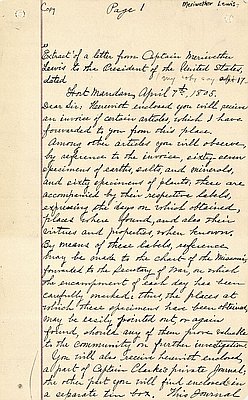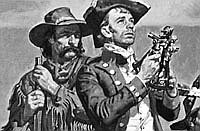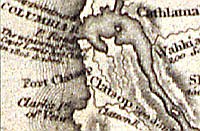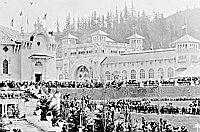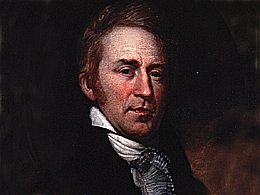Jefferson's Idea
The hard evidence of the origins of the Lewis and Clark Expedition sit on bookshelves at Monticello, Thomas Jefferson’s residence near Charlottesville, Virginia. The books, maps, travelers’ accounts, catalogs, and reports about the American West in Jefferson’s library reflect his intense focus on the region and his powerful curiosity. Looking west from Monticello, Jeffersonwondered what could be learned from the continent that lay beyond frontier American settlements. His list of queries spanned an impressive range, including questions about geography, natural history, Native American cultures, natural resource wealth, and the possibility of a Northwest Passage across the continent.
By the beginning of the nineteenth century and his election to the presidency, Jefferson had been studying and thinking about the American West for more than two decades. He embraced the Enlightenment, a way of understanding nature and the world that emphasized empirical knowledge and rational thought. To know about the West, Jefferson knew, meant exploring, measuring, and gathering information firsthand. It required investigations on the ground to confirm or change impressions he had gained from his reading.
By the 1780s, Jefferson believed the opportunity ripe for sponsoring an exploration of the western regions. He approached George Rogers Clark in 1783, not long after the peace treaty with Britain determined the western boundary of the new nation. Suggesting that the experienced war hero Clark lead an expedition to investigate the western half of the continent, Jefferson explained: “Some of us have been talking here in a feeble way of making the attempt to search that country. . . . How would you like to lead such a party?” Clark said no, wondering whether a large party “might not alarm the Indian Nations they pass through.” He suggested sending “three or four young Men . . . at a Trifling Expence.”
Three years later, while in Paris as America’s representative to France, Jefferson had another opportunity to get someone on the ground in the West. John Ledyard, adventurer and veteran of James Cook’s third voyage to the Northwest Coast, proposed to traverse North America from the Pacific Coast to the Mississippi River Valley on foot, with minimal provisions. Ledyard’s idea was fanciful, but it intrigued Jefferson and disclosed his continuing interest in exploring the West. Perhaps mercifully, the Russians squelched Ledyard’s plan when they denied him permission to cross Siberia.
By 1792, increasing evidence that Britain and perhaps other nations had interest in laying claims to western lands prompted Jefferson to talk fellow members of the American Philosophical Society into offering a thousand-guinea prize for anyone who would trek across the continent and bring back “satisfactory proof of having crossed to the South Sea” by way of the Missouri River. No one responded, but Jefferson persisted and gathered more financial support. He pursued French botanist Andre Michaux to carry out the expedition. Writing to Michaux in 1793, Jefferson offered him “certain sums of money for your encouragement to explore the country along the Missouri, & thence Westwardly to the Pacific ocean” and return with detailed observations and information about the lands, resources, indigenous people, and more. Politics blocked the plan, however. French political intrigue in America stirred up partisan conflicts among American leaders, and one casualty was Michaux’s planned exploration.
Thomas Jefferson’s best opportunity—and the one that proved out—came in 1803, nearly two years into his presidency. Developments in international politics and geographical discoveries, especially the ongoing search for a Northwest Passage through North America, had stimulated Jefferson’s continued interest in western exploration. Maritime and land explorers had looked for a Northwest Passage for centuries, but it had proved elusive. Most maps that showed such a route were at best conjectures and at worst complete fabrications. Jefferson kept abreast of discoveries by purchasing maps and descriptions as they became available, and there is little doubt that he was the best informed American about the status of North American geographical exploration in 1800.
He knew from the publication of James Cook’s Third Voyage (1776-1779) that a pathway north of fifty degrees latitude was unlikely. George Vancouver’s extensive survey of the Northwest Coast in 1792, including the Puget Sound region and the lower Columbia River, confirmed Cook’s findings. In 1801, publication of Alexander McKenzie’s Voyages from Montreal, which included maps of his exploration of present-day British Columbia, closed out the last hope for a far northern passage. These discoveries left a narrow band of geography—between the 49th and 45th parallels—where a passage might be found, and this is where Jefferson concentrated his interest.
The proximate cause of Jefferson’s action in 1803, however, was his concern over Britain’s intentions. Hudson’s Bay Company traders had been operating for decades in the regions south and west of Hudson Bay and they surely had designs on the Rockies and beyond. Alexander McKenzie had articulated this threat in his Voyages, a passage Jefferson read with alarm:
By opening this intercourse between the Atlantic and Pacific Oceans and forming regular establishments through the interior, at both extremes, as well as along the coasts and islands, the entire command of the fur trade of North America might be obtained.
Jefferson referred directly to “the trade of another nation carried on in a high latitude” in a confidential message he sent to Congress on January 18, 1803, requesting funds for a western exploratory expedition. Such an expedition, Jefferson proposed, could be accomplished by “an intelligent officer with ten or twelve chosen men, fit for the enterprize and willing to undertake it, taken from our posts [who] . . . might explore the whole line, even to the Western ocean . . . . for the purpose of extending the external commerce of the U.S.”
© William L. Lang, 2004. Updated and revised by OHP staff, 2014.
Sections
Related Historical Records
Sir Alexander MacKenzie (1762-1820)
In July 1793, at Bella Coola, 100 miles north of the northern tip of Vancouver Island in what is now the province of British Columbia, Alexander MacKenzie, along …
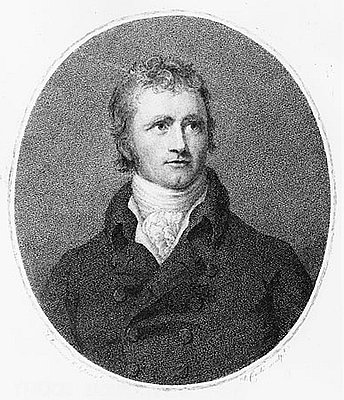
Meriwether Lewis to Thomas Jefferson, 1805
Captain Meriwether Lewis wrote this letter to President Thomas Jefferson in early April 1805 from Fort Mandan, near present-day Washburn, North Dakota. It was hand-copied and the spelling corrected …
